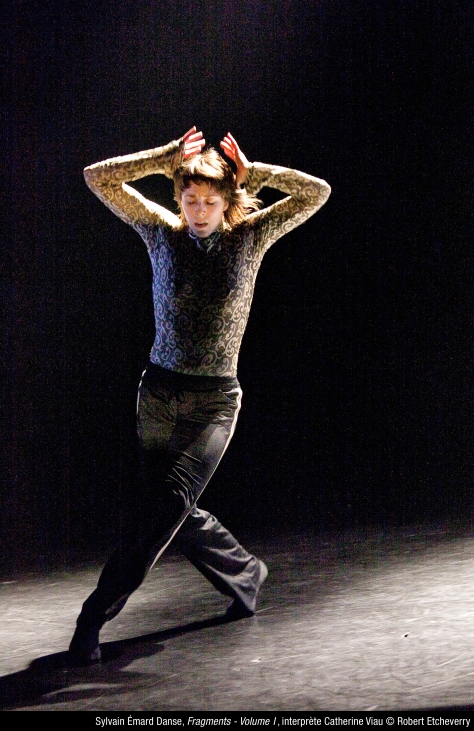Howdy!
If you’ve been reading the previous parts, you probably think that I’m not a big fan of The Triennale québécoise 2011. How ’bout I start moving the pendulum in the other direction and talk about some kick-ass art? Stuff that is worth the price of admission ($12 last time I checked, but did you realize that the admission to the Musée d’art contemporain de Montréal has gone up 50% in the past four years? Way more than inflation, it used to be one of the bargains in the city, now I think twice about what they are showing before giving them money, but I digress). Two words: Charles Stankievech.
Back in 2007 I saw something of his called Timbral and was pretty gosh darn impressed. Something about felt and banging away on a piano always makes me go weak in the knees.
Then I heard something about him going to the Yukon and kind of thought to myself (quietly) that making a trip up there to see his work was perhaps, a little bit too far to go – but you never know. I know some people up north, and stranger things have happened. But basically didn’t give him much thought, following the standard issue cliche, out of sight, out of mind.
But lets backtrack for an instant. If, upon entering the Musée d’art contemporain de Montréal, after buying your ticket, you take the stairs (and yes, I will talk about Dean Baldwin’s boat, later), turn to your right (and yes, I will talk about Thérèse Mastroiacovo‘s work, later too) and then right again, Charles Stankievech’s piece is going to be something like the fifth one you see. If you take that route it’s the first one that gets its own room. (There are eight basic routes you can take through the Triennal.) You can’t miss it.
As you walk in there is a recessed shelf, with an open copy of The Purple Cloud by M. P. Shiel glassed in with a purple/pink/rose colored light, open the door, turn the corner and there you are. Smack dab in front of a wall-sized video of an exploded smoke grenade in, what I presume is, the Yukon.
When I saw it, I lucked out in my timing (the whole piece is maybe 5 minutes long, if it’s lucky) in that as I walked in, the smoke grenade had just been detonated and the purple cloud that spewed from it was still a long way off in the distance.
As I sat there, the smoke gradually was blown towards the camera, until it covered the entire screen, and then dispersed. Simple enough, right? Well, maybe, but not so fast.
First there is the score by Tim Hecker, a very low rumbling, kind of like what you would imagine something like a convoy of really big trucks would make if you put your ear to the wall of a tunnel they were in, combined with something that sounds like a methadone induced bird call along with some sort of vaguely ethereal and shimmery orchestral effect. Probably better if you were to go and listen to it yourself.
The score is so effective, that I would almost go so far as to say that it should be called a piece by Mr. Hecker with video done by Mr. Stankievech. Almost.
Second, after doing some cursory research into the book, it turns out that it’s all about the last man on earth, who just so happens to be at the North Pole, and that a purple cloud has been the reason that everyone died.
Third, according to the Marie Fraser, it’s a “performance… of Jules Olitski‘s painting ‘Instant Loveland.'”

Fourth and finally, there’s Kirby. A videogame character that is a purple/pink amorphous blob that inhales his enemies.
I’m not quite certain what to make of all these antecedents. But it gives me pause. I’m not as convinced that Kirby and Olitski are as significant as Shiel, but that might come from a lack of first hand knowledge of either one, and somehow I wish Mr. Stankievech and Mr. Hecker could have somehow incorporated Charles Wright into the mix.
Despite what I want, the piece is called Loveland. It’s one of the more compelling piece in the Triennal. Part of the reason it is so compelling is due to the the low rumble of the soundtrack which gives a sense of foreboding. This sense of foreboding is reinforced by the movement of the purple cloud towards the camera. And then toss in the rather bleak Yukon landscape, and you can’t help but think that something, most likely bad, is going to happen. It is that sensation that that keeps you riveted. It was the combination of effects that made me feel like I was someplace else, in some hazy dream/nightmare-in-waiting.
I’m certain that I could go on at length about some sort of doomsday/last person on earth scenario along with amorphous purple forms that swallow everything, but that would require reading the book and playing the game, both of which while I’m certain would be entertaining aren’t exactly high on my list of things to do. So I won’t. I’ll leave that for some future PhD. student, I’d much rather watch Loveland.
Basically, art makes you think, good art makes you think hard, and very good art makes you think long and hard. I’ve spent most of the past four days thinking hard about Mr. Stankievech’s Loveland…
And then finally, so that the research wasn’t all for naught, here are some other songs called Loveland that I was able to find on YouTube.
+++++
Abba
Wild T & The Spirit
Rollover
R. Kelly
B-52s
Lonnie Liston Smith
Follies



